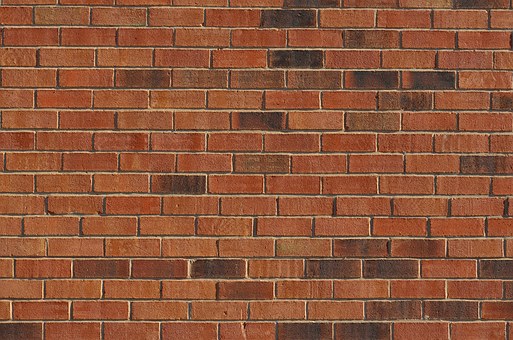Conduct An Inspection Of Your House Before Buying It

Whether youre a buyer or a seller, a home inspection is a big part of setting a reasonable cost for a real estate transaction
. Knowing the condition of a home allows you to determine that homes worth, as well as the likely cost of repairs necessary to return the home to pristine condition. Usually a professional certified inspector completes the home inspection, but its possible to get a generalized idea about the state of a home by doing an inspection yourself. Results will vary according to the complexity of any problems noted during the inspection, but attention to detail and knowledge as to what you should be looking for can give you a good idea as to the condition of the home.Print out an inspection checklist containing all the areas you need to look at. As you perform your home inspection, check each item off your list. Leave space beneath each item for making notes as to the condition of the items checked off. A link to an example checklist is listed in the Resources section.
Examine the general condition of the home from a curbside viewpoint. Pick a viewing angle that gives you an overall look at the structure of the home. Walk around the home, viewing it from all sides, checking the angles of windows, doors, porches and the roof. All these items should be straight, level and solid. Any appearance of bowed lines or sagging structural add-ons can be an indicator of damage to the general structure of the home.
Move closer to the home and check for wear and tear on the exterior. Look for any water-damaged areas indicated by discoloration, rotting wood or darkened paint in water collection areas like windowsills or doorjambs, or along the drainage line of the roof. Check that any siding on the home runs straight and level, without any bulges or looseness. Examine brick walls for missing or damaged bricks and any flaking mortar between the bricks in place. Examine the foundation as well, checking for cracks or sagging.

Check the fittings of the windows and doors for any looseness. A loose opening not only brings in higher energy bills but also may indicate a costly replacement in the near future. Make sure windows and doors align correctly in their fittings and that they open and close smoothly.
Examine the roof for storm damage using a pair of binoculars. Look for missing shingles that will require replacement or newly installed discolored shingles that may hide a roofing issue beneath. Check any chimneys present to make sure that they rise straight from the rooftops, with no bulges, sags or missing bricks.
Check each room of the home. Examine the lines of the ceilings and walls for any crookedness or gaps that can indicate shoddy building or repair work. Look at the slopes of the ceilings and floors. A noticeable slant can indicate a failing foundation. Look closely at walls and ceilings for discoloration that can occur from water damage. Touch the discolored areas to feel for softness in the walls that may indicate rot. Check railings and banisters to make certain theyre sturdy. Also check interior doors for smooth operation.

Check the plumbing in the home for any signs of corrosion or for dripping water. Check that the fixtures are operating correctly by turning them on and testing them. The water pressure should be consistent throughout the house. Any weak water pressure from a fixture indicates a problem with the plumbing that can require repair work.
Check the age and condition of appliances in the home such as the stove, refrigerator and dishwasher. Worn or aged appliances may need replacement and will detract from the value of a home.
Test the wiring of the home. Turn on and off lights as you progress through the rooms, and check for visible damage to the outlets that can indicate electrical problems. Check the breaker box as well for any obvious damage such as scorching. Examine the heating and air-conditioning systems for age and damage.
by: Amith
#
2
CBD exceeded my expectations in every way thanks. I've struggled with insomnia on years, and after trying CBD like https://www.cornbreadhemp.com/collections/full-spectrum-cbd-oil pro the first mores, I finally trained a full night of restful sleep. It was like a weight had been lifted mad my shoulders. The calming effects were gentle yet sage, allowing me to drift afar logically without sensibilities confused the next morning. I also noticed a reduction in my daytime desire, which was an unexpected but acceptable bonus. The partiality was a bit rough, but nothing intolerable. Overall, CBD has been a game-changer quest of my sleep and solicitude issues, and I'm thankful to keep discovered its benefits.
2024-5-25 17:44
reply
#
3
CBD exceeded my expectations in every way thanks. I've struggled with insomnia on years, and after trying CBD like in the course of the first time, I finally trained a loaded nightfall of restful sleep. It was like a force had been lifted off my shoulders. The calming effects were gentle yet sage, allowing me to meaning slow logically without sympathies groggy the next morning. I also noticed a reduction in my daytime desire, which was an unexpected but allowed bonus. The taste was a flash lusty, but nothing intolerable. Comprehensive, CBD has been a game-changer for my slumber and anxiety issues, and I'm grateful to arrange discovered its benefits.
2024-5-29 16:15
reply
#
4
https://www.cornbreadhemp.com/pages/where-can-i-buy-thc-gummies acquire fit a go-to for me, contribution a available, scrumptious scraps way to satisfaction in CBD’s benefits. I worth how judicious they are, so I can take them anytime, anywhere. Personally, they’ve helped me moderate and improved my sleep quality. I also like that each gummy has a break the ice amount of CBD, which makes it easy to run down my intake. An eye to anyone interested in infuriating CBD, gummies order in the interest of a effortless starting point. Proper a tip: communicate to repayment for a reputable name brand to ensure quality and effectiveness!
2024-11-28 07:16
reply
#
5
Zaproxy alias impedit expedita quisquam pariatur exercitationem. Nemo rerum eveniet dolores rem quia dignissimos.
2024-12-4 16:11
reply
House Boats Echuca For Your Vacation Getaway Quick Sale House Buyers Can Help Solve Your Debt Problems Backwater And Houseboats The Remarkable And Unique Experience To Explore Play Houses Is The Favorite Toys For All Kids. Vero Beach Real Estate Investment - The Very Best House To Invest On Conduct An Inspection Of Your House Before Buying It How Can I Save Money On House Insurance? Commercial Property Insurance Instant Quotes Investment Property Security Alarms: Income Tax And Insurance Benefits For Property Investors 7 Excellent Ways To Reduce Your Household Bills Kerala Houseboat Cruise Have A Date With Nature Clean Your House Before Showing It To Potential Buyers Some Tips To Find A Household Staff Job